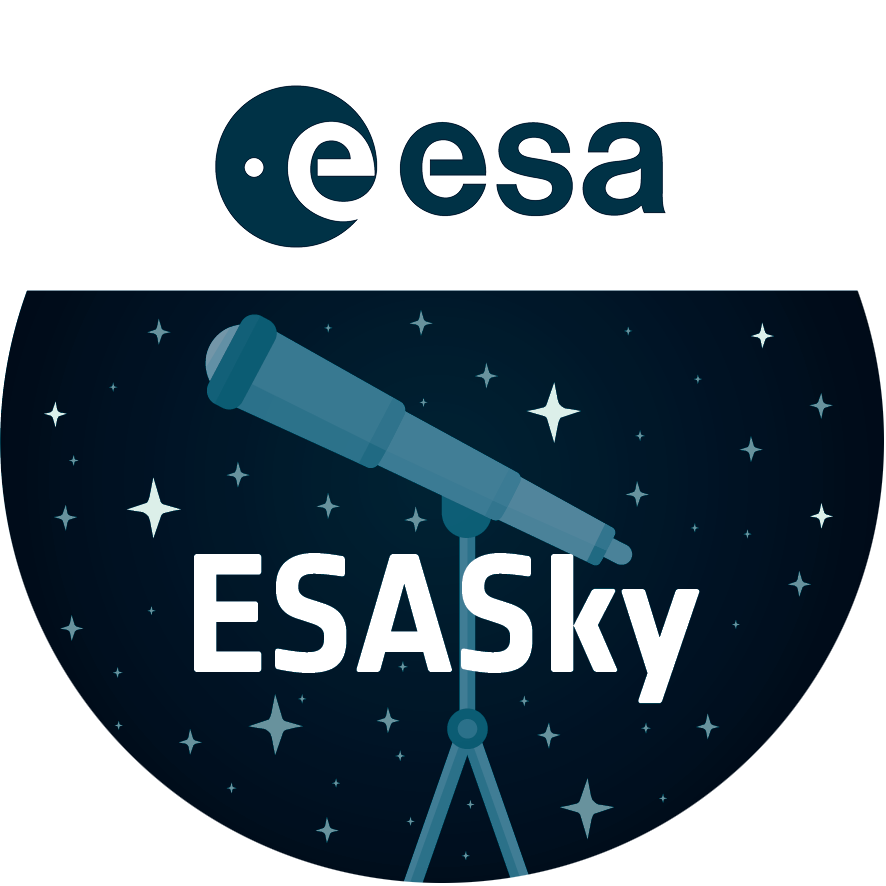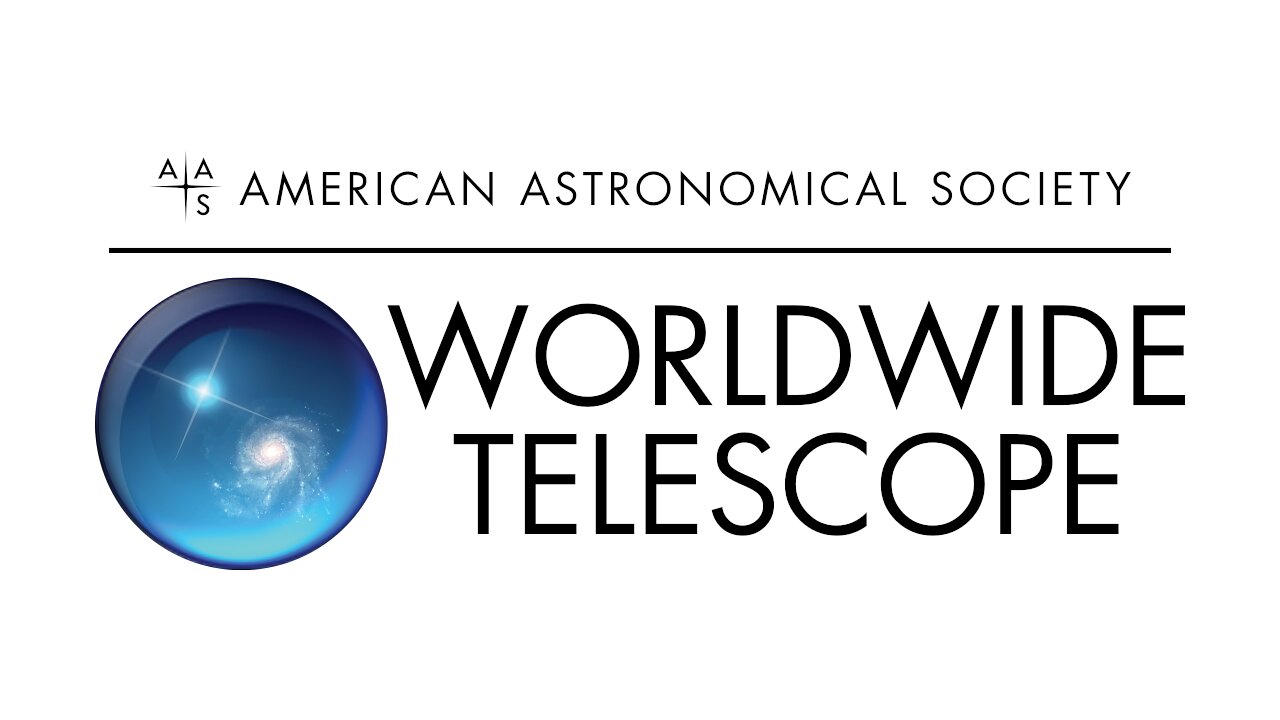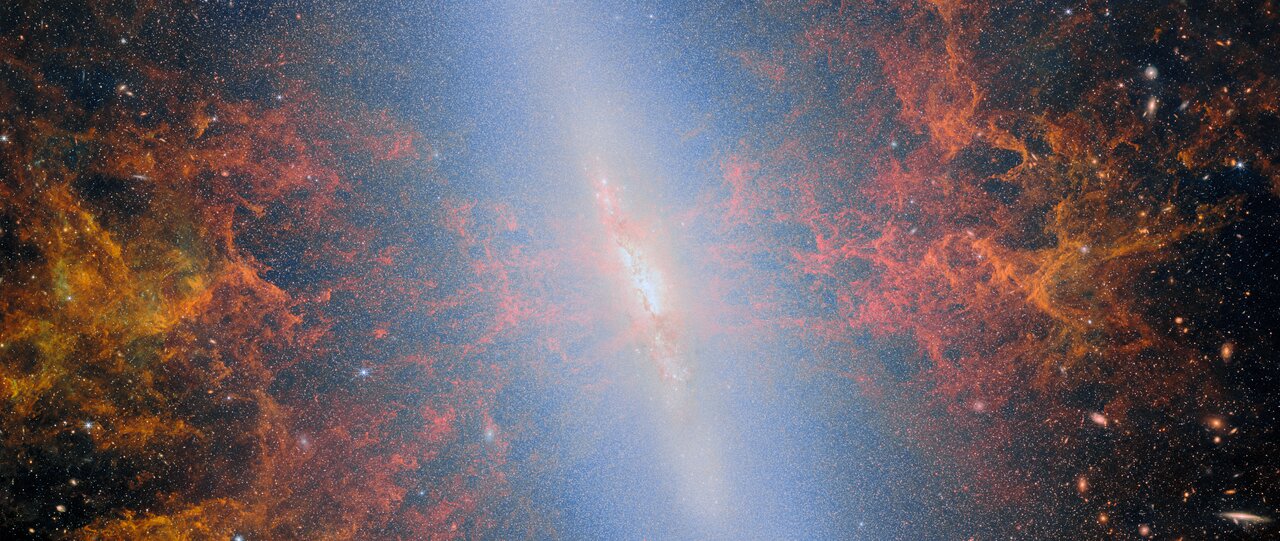About the Object
| Name: | M82 | |
|---|---|---|
| Distance: |
12 million light years | |
| Constellation: | Ursa Major | |
| Category: | Galaxies NIRCam Picture of the Month | |
Coordinates
| Position (RA): | 9 55 51.59 |
|---|---|
| Position (Dec): | 69° 40' 46.90" |
| Field of view: | 5.85 x 2.47 arcminutes |
| Orientation: | North is 130.5° left of vertical |
Colours & filters
| Band | Wavelength | Telescope |
|---|---|---|
| Infrared | 1.4 μm | James Webb Space Telescope NIRCam |
|
Infrared
Fe II | 1.64 μm | James Webb Space Telescope NIRCam |
|
Infrared
molecular hydrogen | 2.12 μm | James Webb Space Telescope NIRCam |
|
Infrared
methane | 2.5 μm | James Webb Space Telescope NIRCam |
|
Infrared
PAH | 3.35 μm | James Webb Space Telescope NIRCam |
| Infrared | 3.6 μm | James Webb Space Telescope NIRCam |
A starburst shines in infrared
Featured in this NASA/ESA/CSA James Webb Space Telescope Picture of the Month is a nearby galaxy that outshines the Milky Way. This galaxy, called Messier 82 (M82) or the Cigar Galaxy, is situated just 12 million light-years away in the constellation Ursa Major.
Despite being smaller than the Milky Way, M82 is five times as luminous as our home galaxy and forms stars ten times faster. M82 is classified as a starburst galaxy because it is forming new stars at a rate much faster than expected for a galaxy of its mass, especially at its centre. In visible-light images of M82, the central hotbed of activity is obscured by a network of thick and dusty clouds. Webb’s Near-InfraRed Camera (NIRCam) has drawn back these clouds, revealing the full brilliance of the galactic centre.
What caused M82’s burst of star formation? The answer likely lies with its neighbour, the larger spiral galaxy M81. Researchers suspect that the two galaxies have interacted gravitationally, sending gas pouring into M82’s centre millions of years ago. The influx of gas provided the raw material for new stars to form — and form they did! M82 is home to more than 100 super star clusters, some of which are still in the process of forming and are blanketed with dense, dusty gas. Super star clusters are more massive and luminous than typical star clusters; these each contain hundreds of thousands of stars.
A previous Webb NIRCam image of M82 was released in 2024. The earlier image focused on the very core of the galaxy, where individual clusters of young stars stand out against the clumps and tendrils of gas. This new image takes a broader view of M82’s brilliant centre, capturing the light of billions of stars as well as the glow of organic molecules called polycyclic aromatic hydrocarbons, or PAHs.
Researchers used the new Webb data to identify plumes traced by the emission from PAH molecules. Each plume is only about 160 light-years wide, and the Webb images show that these plumes are made up of multiple individual clouds that are 16–49 light-years across — an incredible level of detail enabled by Webb’s sensitive instruments. These clouds appear to have been caught up in the galaxy’s powerful outflowing winds and whisked away from the galactic disc.
Ultimately, this phenomenon points back to the galaxy’s remarkable abundance of massive star clusters: as these massive clusters form, their newborn stars sear the surrounding gas with high-energy radiation and particles, launching the outflowing wind that is traced by this NIRCam image.
[Image Description: An image of the central part of galaxy M82. The galaxy’s disc extends from the top to the bottom of the image, emitting a blue-white glow. Gas erupts from the brightly shining centre, forming an hourglass-shaped plume of red and orange dust clouds to the left and right. Ridges and cavities in the gas are visible in great detail. Many distant galaxies can be seen in the background, as well as tiny pinprick stars in M82.]
Links
- MIRI image of M82
- Space Sparks Episode: June 2025 Picture of the Month - M82
- Pan video: M82 (NIRCam)
- Pan video: M82 (MIRI)
- Transition video: M82 (NIRCam and MIRI)
ESA/Webb, NASA & CSA, A. Bolatto
About the Image
| Id: | potm2506a | |
|---|---|---|
| Type: | Observation | |
| Release date: | 30 June 2025, 10:00 | |
| Size: | 11229 x 4744 px | |




